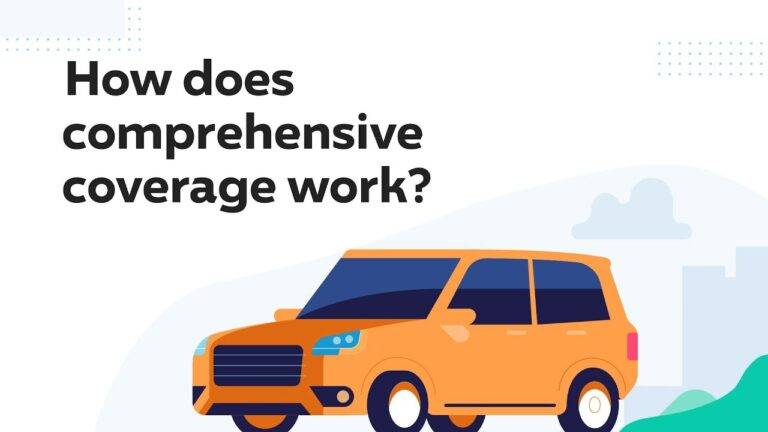Tailoring : Choosing the right car insurance coverage isn’t one-size-fits-all. It’s about tailoring your coverage to your individual needs and circumstances. This means carefully assessing your situation to determine the appropriate level of protection without overspending.

Table of Contents
Factors to Consider When Tailoring Your Coverage:
- Driving Habits: How often do you drive? Is it mostly for commuting, pleasure, or long-distance travel? Frequent drivers may want to consider more comprehensive coverage.
- Vehicle Value: The value of your car plays a significant role. For newer or more expensive vehicles, collision and comprehensive coverage become increasingly important.
- Location: Where you live and park your car can influence risk factors like theft, vandalism, or weather-related damage. Urban areas or regions prone to natural disasters may necessitate additional coverage.
- Financial Situation: Evaluate your budget and risk tolerance. Higher deductibles can lower premiums, but ensure you can afford them in case of an accident.
- Personal Risk Tolerance: Are you comfortable assuming more risk to save on premiums, or do you prefer the peace of mind of extensive coverage?
- Types of Coverage and How to Tailor Them:
- Liability Coverage: This is mandatory in most states and covers bodily injury and property damage you cause to others. Consider increasing liability limits beyond the state minimum for greater protection.
- Collision Coverage: This covers damage to your vehicle from collisions with other cars or objects. If you have a newer or more valuable car, collision coverage is crucial.
- Comprehensive Coverage: This protects against non-collision events like theft, vandalism, fire, or weather damage. Evaluate your location and risk factors to determine its necessity.
- Personal Injury Protection (PIP): This covers medical expenses for you and your passengers regardless of fault. Consider your health insurance coverage and state requirements.
- Uninsured/Underinsured Motorist Coverage: This protects you if you’re involved in an accident with a driver who has insufficient or no insurance.
Actionable Tips for Tailoring Your Coverage
- Review your current policy: Understand your existing coverage and identify any gaps or unnecessary coverage.

- Get quotes from multiple insurers: Compare rates and coverage options to find the best value.
- Talk to an insurance agent: Seek professional advice to assess your needs and recommend suitable coverage.
- Re-evaluate your coverage regularly: As your circumstances change, so might your insurance needs.
Expanding on Tailoring Car Insurance Coverage:
Additional Coverage Options to Consider:
- Gap Insurance: If you’re financing or leasing a car, gap insurance covers the difference between what you owe and the car’s actual cash value in case of a total loss.
- Rental Reimbursement Coverage: This covers the cost of a rental car while your vehicle is being repaired after a covered accident.
- Roadside Assistance Coverage: This provides help with services like towing, jump-starts, tire changes, and lockout assistance.
- Custom Equipment Coverage: If you’ve added custom parts or equipment to your car, this coverage protects them in case of damage or theft.
- Advanced Strategies for Tailoring Coverage:
- Usage-Based Insurance Programs: These programs track your driving habits through telematics devices or mobile apps and offer discounts based on your safe driving behavior.
- Increasing Deductibles: Opting for higher deductibles can significantly lower your premiums, but ensure you have the financial means to cover them in case of a claim.
- Bundling Policies: Combining your car insurance with other policies, such as home or renters insurance, can often lead to substantial discounts.
- Exploring Discounts: Inquire about available discounts for good students, safe drivers, seniors, military personnel, and more.
Impact of Life Changes on Coverage Needs:
- Marriage or adding a teen driver: These events may require adjustments to your policy and coverage limits.
- Purchasing a new car: Ensure your coverage aligns with the value and specific needs of your new vehicle.
- Moving to a new location: Different areas may have varying risk factors, necessitating changes to your coverage.
- Staying Informed and Proactive:
- Regularly review your policy: Ensure your coverage remains adequate and aligns with your current needs.
- Stay updated on industry changes: Keep track of evolving regulations, technologies, and trends that may impact your coverage options.
- Seek professional advice when needed: Consult with an insurance agent or financial advisor for personalized guidance.
- Remember, tailoring your car insurance coverage is an ongoing process. By actively assessing your needs and exploring available options, you can ensure optimal protection and peace of mind on the road.





